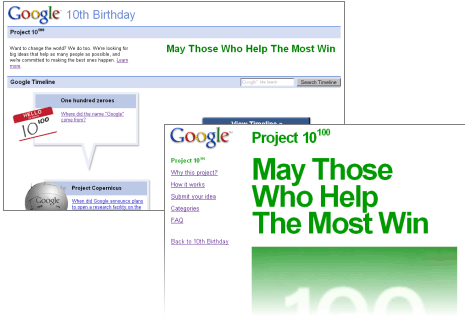The Nam June Paik Art Center is located in Yongin, a city on the outskirts of Seoul. It is supported by the Gyeonggi Cultural Foundation and Gyeonggi Province. The center was discussed with Nam June Paik and is under development since 2001. The NJP Art Center opened its permanent building in April 2008. Under the current director, Young Chul Lee,(and Chief curator Tobias Berger, former Director of Para-Site HK) it aspires to reactivate the experimental and interventionist spirit of 20th century and contemporary art practices in order to become a locus where aesthetic, political and social potentialities contribute to questioning and redefining the relationships between art, philosophy, media and life.

I like the branding of the museum. It is said in the home page:
The enigmatic mathematical symbols used for the main logo image of Nam June Paik Art Center are derived from the numerical expression that Paik used in an article for the magazine De/collage No.3 in 1963 and re-used commemorating his 54th birthday, and they represent Paik's rich imagination and unique sense of humor. The logo image shows that when a question is reversed and transformed into a new question, endless transformations and recurrences take place: it incorporates the identity of Nam June Paik Art Center aiming to be an experimental space that doesn't cease to question established answers.
The first event : Now Jump
NOW JUMP, the festival's title, originates in an Aesop punchline: "Hic Rhodus, Hic saltus!" NOW JUMP is an appeal to exceed past achievements: NOW is always the time to act. An invitation or call to action, this festival also represents the ambition of the Nam June Paik Art Center to leap into the future through the NJP Festival.
NOW JUMP is organized according to the concept of 'Stations,' simultaneously encompassing a state of stillness and of motion or anticipation of motion. In our everyday experience these can be places where trains or buses regularly stop; broadcasting stations; power stations; research institutes; studios; local headquarters; habitats; social status or postures. For NOW JUMP five stations exist as concurrent initiatives: exhibitions, performances, and platforms to establish discourse.
Station_1 is a point of departure gathering Nam June Paik archival material and works, and combining it with that of his friends, colleagues and references. Recontextualizing the artist's work within the history of his own practice, that of Fluxus and other trends of the 1960s, it is an attempt to highlight the complexities of creativity and its social and political significance. Ultimately the goal is to renegotiate the influence of Nam June Paik within the practice of new generations of artists.
Station_2 is a state of anticipation - reintroducing the notion of potentiality into the actualized exhibition space and implanting an openness that the exhibition loses when it comes into being. Different forms of performance are given a platform from which they can be regarded and from which they can also look at each other. By producing their own space, time and durational place these works expose the circuits into which they are inserted and begin to expand into the realm of lived experience.
Station_3 is a journey that has already begun. Unlike Stations 1 and 2 which are mainly presented in the Art Center building, Station 3 intersperses artworks into a new private gallery and an existing high school gymnasium. The specific characteristics of these buildings create shifts in mood and tone. Whereas before the works were in dialogue with the past and the contemporary present, here the dialogue ranges from domestic and introspective to imposing and controlled, reminiscent of being in urban space. In this context, the practices presented dwell on creativity as an ability to open lines of flight from reductive definitions and restrictions.
Station_4 and Station_5 are spaces of transit offering temporary points of arrival, moments for reflection, and a place from which to embark on new departures. Respectively, they correspond to workshops, seminars and publications and to the establishment of the NJP Art Center prize.
Artists List
Station_1: Allan Kaprow, Anzaï, Bas Jan Ader, Byungki Whang, Charlotte Moorman, Eunjoo Lee, George Brecht, George Maciunas, Hans G. Helms, Hermann Nitsch, Joe Jones, John Cage, Joseph Beuys, Karlheinz Stockhausen, Klaus Barisch, Kulim Kim, Kunyong Lee, Larry Miller, Manfred Leve, Manfred Montwé, Mary Bauermeister, Merce Cunningham, Nam June Paik, Naoki Ishikawa, Neungkyoung Sung, Otto Muehl, Peter Fischer, Peter Moore, Peter Weibel, Robert Filliou, Shiomi Meiko, Shuya Abe, Sukhi Kang, Sylvano Bussotti, Ulrich Bassenge, Wang Xingwei, William Gedney, Xiao Zhuang, Yiso Bahc, Yuji Takahashi
Station_2: Annie Vigier & Franck Apertet, Antonia Baehr, Boris Charmatz, Byungjun Kwon, Claudia Triozzi, Donghee Koo, Dora Garcia, Forced Entertainment, Guido van der Werve, Guillaume Désanges, Hwayeon Nam & Younggyu Jang, Hyoungmin Kim, Kris Verdonck, La Ribot, Peter Welz, Romeo Castellucci, Ryoji Ikeda, Rimini Protokoll, Toshiki Okada, Vincent Dupont, William Forsythe
Station_3: A kills B, André Gonçalves, Aurélien Froment, Bik Van der Pol , Bomin Kim, Changsub Choi, Choongsup Lim, Dujin Kim, Herwig Weiser, Hontoban – Anthony Bannwart, Jackson Hong, Jan Fabre, Joongki Geum, Jueun Lee, Kiyoshi Kuroda, Kyungwon Moon, Manon de Boer, Marjolijn Dijkman, MeeNa Park, Minsuk Cho, Namaiki, Paolo Soleri, Paul Granjon, Rene Daalder, Rostarr, Sasa [44], Sergio Prego, Seungmo Seo, Stephan Reusse, Stephen Smith/Neasden Control Centre, Susie Lim, Sulki & Min, Wolsik Kim, Yangachi, Zilvinas Kempinas
Station_4: A special project by castillo/corrales
NOW JUMP from October 8, 2008 to February 5, 2009
http://www.njpartcenter.kr
To find out more contact:
Nam June Paik Art Center
85 Sanggal-dong, Giheung-gu,
Yongin-si, Gyeonggi-do
446-905
Republic of Korea
T: + 82 (0) 31 201 8543
F: + 82 (0) 31 201 8515
c.pestana@njpartcenter.kr


















